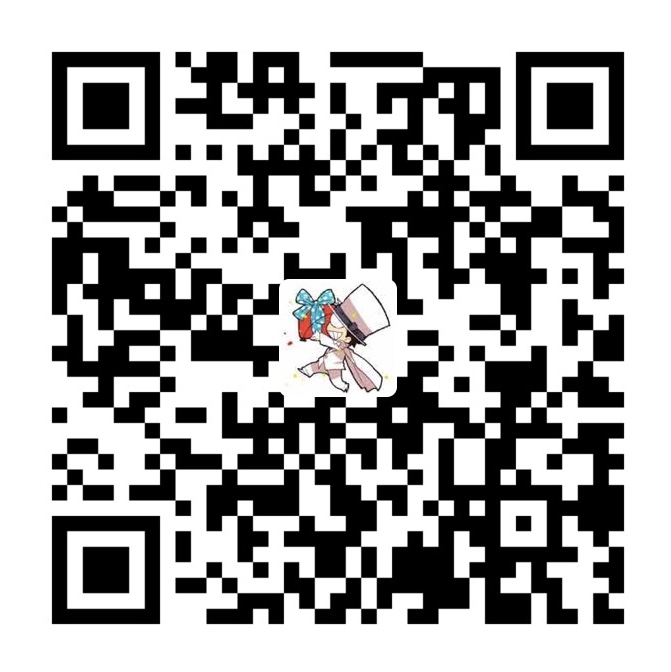source:
- Data Model
- Book: Fluent Python
表3-1
dict、collections.defaultdict和collections.OrderedDict这三种映射类型的方法列表(依然省略了继承自object的常见方法);可选参数以[…]表示
Methods of the mapping types dict, collections.defaultdict, and collections. OrderedDict (common object methods omitted for brevity); optional arguments are enclosed in […]
| dict | defaultdict | OrderedDict | ||
|---|---|---|---|---|
d.clear() |
● | ● | ● | 移除所有元素 Remove all items |
d.__contains__(k) |
● | ● | ● | 检查 k 是否在 d 中 k in d |
d.copy() |
● | ● | ● | 浅复制 Shallow copy |
d.__copy__() |
● | 用于支持 copy.copy Support for copy.copy |
||
d.default_factory |
● | 在 __missing__ 函数中被调用的函数,用以给未找到的 元素设置值* Callable invoked by __missing__ to set missing valuesa |
||
d.__delitem__(k) |
● | ● | ● | del d[k],移除键为 k 的元素 del d[k]—remove item with key k |
d.fromkeys(it, [initial]) |
● | ● | ● | 将迭代器 it 里的元素设置为映射里的键,如果有 initial 参数,就把它作为这些键对应的值(默认是 None) New mapping from keys in iterable, with optional initial value (defaults to None) |
d.get(k, [default]) |
● | ● | ● | 返回键 k 对应的值,如果字典里没有键 k,则返回 None 或者 default Get item with key k, return default or None if missing |
d.__getitem__(k) |
● | ● | ● | 让字典 d 能用 d[k] 的形式返回键 k 对应的值 d[k] —get item with key k |
d.items() |
● | ● | ● | 返回 d 里所有的键值对 Get view over items (key, value) pairs |
d.__iter__() |
● | ● | ● | 获取键的迭代器 Get iterator over keys |
d.keys() |
● | ● | ● | 获取所有的键 Get view over keys |
d.__len__() |
● | ● | ● | 可以用 len(d) 的形式得到字典里键值对的数量 len(d)—number of items |
d.__missing__(k) |
● | 当 __getitem__ 找不到对应键的时候,这个方法会被调用 Called when __getitem__ cannot find the key |
||
d.move_to_end(k, [last]) |
● | 把键为 k 的元素移动到最靠前或者最靠后的位置(last 的默认值是 True) Move k first or last position (last is True by default) |
||
d.pop(k, [default]) |
● | ● | ● | 返回键 k 所对应的值,然后移除这个键值对。如果没有这个键,返回 None 或者 defaul Remove and return value at k, or default or None if missing |
d.popitem() |
● | ● | ● | 随机返回一个键值对并从字典里移除它# Remove and return an arbitrary (key, value) itemb |
d.__reversed__() |
● | 返回倒序的键的迭代器 Get iterator for keys from last to first inserted |
||
d.setdefault(k, [default]) |
● | ● | ● | 若字典里有键k,则把它对应的值设置为 default,然后返回这个值;若无,则让 d[k] = default,然后返回 default If k in d, return d[k]; else set d[k] = default and return it |
d.__setitem__(k, v) |
● | ● | ● | 实现 d[k] = v 操作,把 k 对应的值设为 v put v at k |
d.update(m, [**kargs]) |
● | ● | ● | m 可以是映射或者键值对迭代器,用来更新 d 里对应的条目 Update d with items from mapping or iterable of (key, value) pairs |
d.values() |
● | ● | ● | 返回字典里的所有值 Get view over values |
表3-2
集合的数学运算:这些方法或者会生成新集合,或者会在条件允许的情况下就地修改集合
Mathematical set operations: these methods either produce a new set or update the target set in place, if it’s mutable
| 数学符号 Math_symbol |
Python Python_operator |
运算符 Method |
方法描述 Description |
|---|---|---|---|
S ∩ Z |
s & z |
s.__and__(z) |
s 和 z 的交集 Intersection of s and z |
S ∩ Z |
z & s |
s.__rand__(z) |
反向 & 操作 Reversed & operator |
S ∩ Z |
z & s |
s.intersection(it, ...) |
把可迭代的 it 和其他所有参数转化为集合,然后求它们与 s 的交集 Intersection of s and all sets built from iterables it, etc. |
S ∩ Z |
s &= z |
s.__iand__(z) |
把 s 更新为 s 和 z 的交集 s updated with intersection of s and z |
S ∩ Z |
s &= z |
s.intersection_update(it, ...) |
把可迭代的 it 和其他所有参数转化为集合,然后求得它们与 s 的交集,然后把 s 更新成这个交集 s updated with intersection of s and all sets built from |
S ∪ Z |
s | z |
s.__or__(z) |
s 和 z 的并集 Union of s and z |
S ∪ Z |
z | s |
s.__ror__(z) |
| 的反向操作 Reversed | |
S ∪ Z |
z | s |
s.union(it, ...) |
把可迭代的 it 和其他所有参数转化为集合,然后求它们和 s 的并集 Union of s and all sets built from iterables it, etc. |
S ∪ Z |
s |= z |
s.__ior__(z) |
把 s 更新为 s 和 z 的并集 s updated with union of s and z |
S ∪ Z |
s |= z |
s.update(it, ...) |
把可迭代的 it 和其他所有参数转化为集合,然后求它们和 s 的并集,并把 s 更新成这个并集 s updated with union of s and all sets built from iterables it, etc. |
S \ Z |
s - z |
s.__sub__(z) |
s 和 z 的差集,或者叫作相对补集 Relative complement or difference between s and z |
S \ Z |
z - s |
s.__rsub__(z) |
s.__sub__(z) 的反向操作 Reversed - operator |
S \ Z |
z - s |
s.difference(it, ...) |
把可迭代的 it 和其他所有参数转化为集合,然后求它们和 s 的差集 Difference between s and all sets built from iterables it, etc. |
S \ Z |
s -= z |
s.__isub__(z) |
把 s 更新为它与 z 的差集 s updated with difference between s and z |
S \ Z |
s -= z |
s.difference_update(it, ...) |
把可迭代的 it 和其他所有参数转化为集合,求它们和 s 的差集,然后把 s 更新成这个差集 s updated with difference between s and all sets built from iterables it, etc. |
S \ Z |
s -= z |
s.symmetric_difference(it) |
求 s 和 set(it) 的对称差集 Complement of s & set(it) |
S △ Z |
s ^ z |
s.__xor__(z) |
求 s 和 z 的对称差集 Symmetric difference (the complement of the intersections & z) |
S △ Z |
z ^ s |
s.__rxor__(z) |
^ 的反向操作 Reversed ^ operator |
S △ Z |
z ^ s |
s.symmetric_difference_update(it,...) |
把可迭代的 it 和其他所有参数转化为集合,然后求它们和 s 的对称差集,最后把 s 更新成该结果 s updated with symmetric difference of s and all sets built from iterables it, etc. |
S △ Z |
s ^= z |
s.__ixor__(z) |
把 s 更新成它与 z 的对称差集 s updated with symmetric difference of s and z |
表3-3
集合的比较运算符,返回值是布尔类型
Set comparison operators and methods that return a bool
| 数学符号 Math_symbol |
Python运算符 Python_operator |
方法 Method |
描述 Description |
|---|---|---|---|
s.isdisjoint(z) |
查看 s 和 z 是否不相交(没有共同元素) s and z are disjoint (have no elements in common) |
||
e ∈ S |
e in s |
s.__contains__(e) |
元素 e 是否属于 s Element e is a member of s |
S ⊆ Z |
s <= z |
s.__le__(z) |
是否为 z 的子集 s is a subset of the z set |
S ⊆ Z |
s <= z |
s.issubset(it) |
把可迭代的 it 转化为集合,然后查看 s 是否为它的子集 s is a subset of the set built from the iterable it |
S ⊂ Z |
s < z |
s.__lt__(z) |
s 是否为 z 的真子集 s is a proper subset of the z set |
S ⊇ Z |
s >= z |
s.__ge__(z) |
s 是否为 z 的父集 s is a superset of the z set |
S ⊇ Z |
s >= z |
s.issuperset(it) |
把可迭代的 it 转化为集合,然后查看 s 是否为它的父集 s is a superset of the set built from the iterable it |
S ⊃ Z |
s > z |
s.__gt__(z) |
s 是否为 z 的真父集 s is a proper superset of the z set |
表3-4
集合类型的其他方法
Additional set methods
| set | frozenset | ||
|---|---|---|---|
s.add(e) |
● | 把元素 e 添加到 s 中 Add element e to s |
|
s.clear() |
● | 移除掉 s 中的所有元素 Remove all elements of s |
|
s.copy() |
● | ● | 对 s 浅复制 Shallow copy of s |
s.discard(e) |
● | 如果 s 里有 e 这个元素的话,把它移除 Remove element e from s if it is present |
|
s.__iter__() |
● | ● | 返回 s 的迭代器 Get iterator over s |
s.__len__() |
● | ● | len(s) |
s.pop() |
● | 从 s 中移除一个元素并返回它的值,若 s 为空,则抛出 KeyError 异常 Remove and return an element from s, raising KeyError if s is empty |
|
s.remove(e) |
● | 从 s 中移除 e 元素,若 e 元素不存在,则抛出 KeyError 异常 Remove element e from s, raising KeyError if e not in s |





